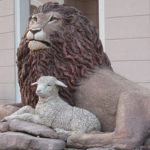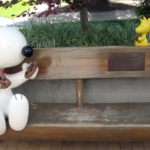In all the hand-wringing about the statistical decline of Baptist congregations in America—which follows similar declines before in the mainline Protestant churches—one important shift seldom gets mentioned. That is the rise of the nondenominational church within the last 40 years.
 Mark WingfieldHere’s a surprising fact reported by Scott Thumma of the Hartford Institute for Religion Research: If the nation’s independent and nondenominational churches today were combined into a single group, they would represent the third-largest cluster of religious adherents in the country, behind only the Roman Catholic Church and the Southern Baptist Convention. And the nondenominationals and independents would rank second nationwide in the number of churches—trailing only Southern Baptists.
Mark WingfieldHere’s a surprising fact reported by Scott Thumma of the Hartford Institute for Religion Research: If the nation’s independent and nondenominational churches today were combined into a single group, they would represent the third-largest cluster of religious adherents in the country, behind only the Roman Catholic Church and the Southern Baptist Convention. And the nondenominationals and independents would rank second nationwide in the number of churches—trailing only Southern Baptists.
As a high school student from Oklahoma in the late 1970s, I visited my cousin in California who took me with her to a relatively new phenomenon there: Calvary Chapel. Being a good Southern Baptist boy from the Bible Belt, I never had seen anything like this before. From its beginnings in Costa Mesa, Calif., in 1965, this nondenominational movement would go on to create a loose network of 1,600 congregations around the world. Something new was happening.
In Texas today, the landscape is dotted with nondenominational churches, especially those identified as “Bible churches.” In our context, these mainly have roots in Dallas Theological Seminary and share a particular structure of pastor as teacher rather than pastor as preacher, along with a particular view of theology and the end times.
Found in every state
Across America, many of the largest congregations in cities today are nondenominational churches—those with no real or visible denominational identity. According to the Hartford Institute, nondenominational churches are “the most dominant religious reality in 46 counties around the country.” Further, nondenominational churches may be found in every state and in 88 percent of U.S. counties.
According to the U.S. Religion Census, there were 35,496 nondenominational Christian churches identified nationwide in 2010. (See a full size version of the map above here) These churches had 12.2 million adherents and 8.6 million in average weekly attendance. That’s a lot of people with no denominational identity.
Just 10 years earlier, in 2000, nondenominational churches were barely on the radar of researchers, not just because they were smaller in number but also because it was harder to capture their numbers. In 2000, the national count found about 1,700 “independent” charismatic and noncharismatic churches with 2 million adherents. That means in just 10 years, the number of nondenominational congregations identified by researchers jumped from 1,700 to 35,000.
While it is impossible to say where adherents to the nondenominational churches come from—surely some are new converts to Christianity and some are not—the American Religious Identification Survey gives some insight. The study has been done in 1990, 2001 and 2008.
Sign up for our weekly edition and get all our headlines in your inbox on Thursdays
From 1990 to 2008, the percentage of Americans who identified themselves as “Baptist” decreased from 19.3 percent to 15.8 percent. During the same period, the percentage of Americans who identified themselves with the more generic label of “Christian” rather than choosing a denominational identity grew from 4.6 percent to 7.4 percent.
Reluctance to report numbers
Adding to the complication of looking at numbers for congregational expressions in America today is the increasing reluctance of congregations to report their numbers. This is yet another symptom of the lack of denominational identity. In the 1950s, it was easy to say how many Baptists and Methodists and Presbyterians there were. Today, particularly among Baptists as autonomous congregations, following the denominational reporting rules is seldom a high priority.
So what does all this mean, and why should you care?
It means if you focus only on the decline of religious adherence in the United States—and specifically the declines among Baptists—you’re only seeing half the story. At the same time some are walking away from church attendance—or never getting in the habit of church attendance—the landscape of the majority of Americans who are religiously active is morphing. Denominations aren’t dead; they’re just less relevant.
Shrinking denominational identity
By breaking free of denominational liturgy and expectations, nondenominational churches opened the door for other congregations to become more independent. It is no coincidence many of the largest churches in America today give no visible indication of denominational identity, even if they are by birth Baptist, Presbyterian or Methodist congregations.
The so-called “worship wars” of the last three decades created a homogenization of Protestant congregations in America, so that it’s often hard to tell the praise team at a Baptist church from the praise team at a nondenominational church. The outliers are those of us who have avoided the blender and maintain our own worship patterns informed either by history or denominational liturgy.
When I stepped into that Calvary Chapel service in Bakersfield, Calif., 35 years ago, I could not have imagined what I was experiencing would redefine Protestant churches across America. But in fact, it has, aided by the likes of Willow Creek Church in Chicago and Saddleback Church in Orange County, Calif. Success breeds imitation, which is perhaps why the influence of the nondenominational movement today reaches far beyond what the statistics show.
Mark Wingfield is associate pastor of Wilshire Baptist Church in Dallas, Texas, and author of the book, Staying Alive: Why the Conventional Wisdom about Traditional Churches is Wrong. His column is distributed by Baptist News Global.














We seek to connect God’s story and God’s people around the world. To learn more about God’s story, click here.
Send comments and feedback to Eric Black, our editor. For comments to be published, please specify “letter to the editor.” Maximum length for publication is 300 words.